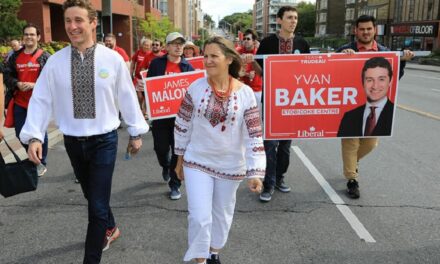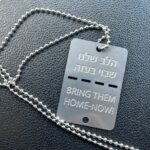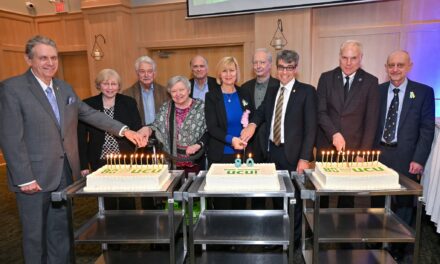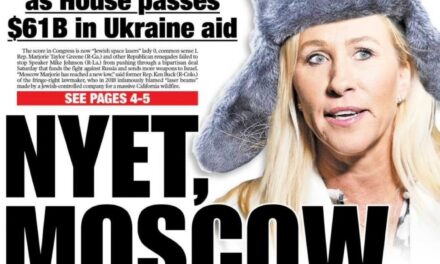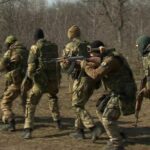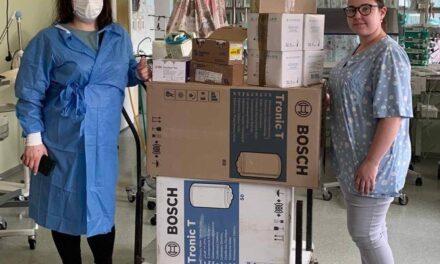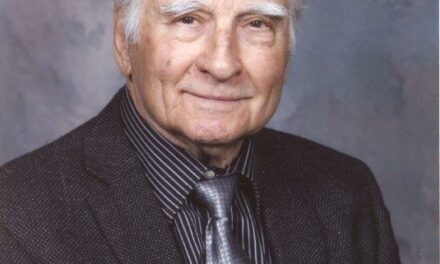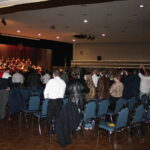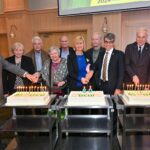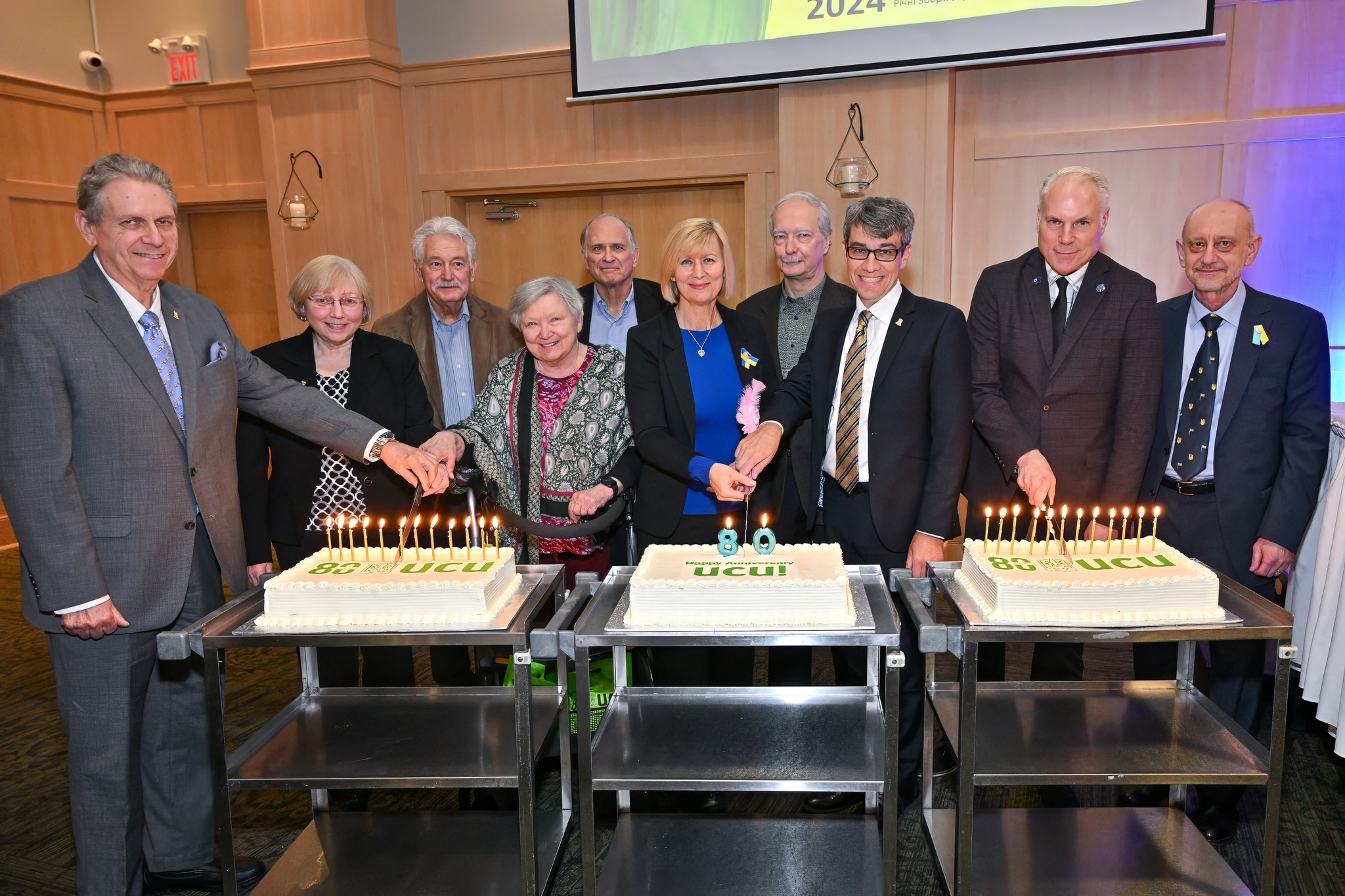Orysya Sopinka for New Pathway – Ukrainian News.
Mamyn lajbychok, synij, synij.
Back in 1974 when I was studying interpretation and translation in Belgium, I decided to visit my grandmother in Dubrova, Ukraine. During the train ride from Brussels to Ternopil, we stopped at a town called Chop on the Slovak – Ukrainian border. Everyone had to leave the train until the border guards did their inspection and the train changed to wider tracks.
I finally arrived in Ternopil. Vujko Ivan was waiting for me on the platform of the train station. He took me to his apartment, introduced me to his wife and baby and made me feel at home. Out came the delicious Ukrainian food, mashed potatoes with fried mushrooms from the woods, pork roast, cucumber salad and bread. I pulled out the gifts I had for them from my suitcase. Tsiotsia Maria was delighted to see a red sweatshirt for her baby son because the colour red was only for members of the communist party of Ukraine.
Vujko Ivan promised to take me to Dubrova. It was illegal for foreigners to travel to a Ukrainian village so he bribed a taxi driver not to inform the police and to wait for us outside baba’s house. Soon we were in Dubrova. Baba Maria asked me what I was doing there and why I wasn’t at home helping my mother. I explained that I had always wanted to meet my family because from the age of six when I was able to read and write Ukrainian, I was writing letters to them. The only other family member in Canada was Vyjko Andrij, my grandmother’s brother. I ran all the way down Gutcher Avenue into his arms when he came to visit us in Sudbury.
Baba told me that her cow that had given birth to twins. A neighbor came over to buy one of the calves because they needed milk for her child. After the woman left, baba went to a big, wooden chest, and pulled out a few items. She explained that these items were left from mama’s Lemko costume when mama was called to work in Germany during the war and never came back. In 1946, the Wakyriak family was forced out of their home in Czystohorb by the Polish, packed everything up into a cart and headed east to Ukraine. Mama’s sisters, Marijka and Hania were hidden at the bottom of the cart so that the Polish soldiers wouldn’t rape them and steal valuable objects that were hidden with them. I thank God for mama’s Lemko costume.
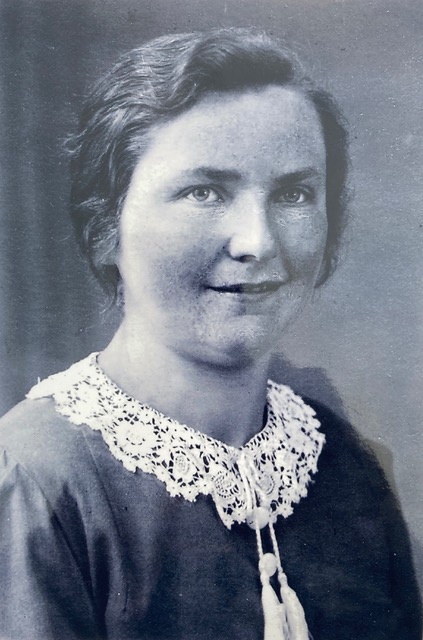
Eva Vakyriak (1920-2014)
When I first saw the laybychok, I almost lost my composure from joy. It was so beautiful. Made out of a satin type, navy blue cloth with a jacquard pattern, lined with linen mama made by hand on her loom and then decorated with beautiful beads bought at the market in Slovakia, the vest emanated a distinct feeling of antiquity mixed with beauty and craftsmanship. Each perfectly cut scallop at the bottom of the vest was beaded symmetrically with colours chosen to compliment the two main flowers on each side of the front and a similar, big flower on the back. The vest had five, pink and light blue, pressed, glass buttons on the front that were so unusual and so attractive that I became speechless.
Baba gave me the lajbychok and then took another treasure out of the chest. It was mama’s Lemko skirt to go with the vest. Again, my eyes feasted on beauty and craftsmanship. The skirt was a bright, red colour made of soft cotton with small yellow and blue flowers printed all over it. The slit, in a lighter cloth in the front made it easy to slip over her legs. The skirt would have been too bulky to wear if it had been made entirely of the red, cotton fabric. It was gathered underneath a linen waistband, four inches wide, made by mama on a loom similar to the lining of the vest. Across the front of the skirt, six rows of lace were sewn on by hand so meticulously that you could not see the thread on the lace. The colours in the skirt matched the colours of the beads in the vest. I put the skirt up to the vest and saw how well they went together. Absolutely gorgeous!
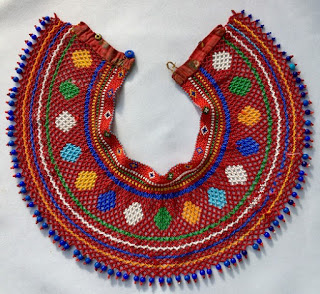
‘Krvyulka’ in the round
The last item that came out of the chest was mama’s kryvulka. I could see there were multiple sections to the broad, beaded collar. It must have taken mama, a teenager, a long time to bead it. The colour of the glass beads matched the ones on her laybychok. This was the ultimate adornment a girl could wear with her Lemko costume for festive occasions. Shopping for beads was an adventure. Girls would walk thirty kilometers through a thick forest and then cross the Slovak border illegally to buy beads at the market. Mama’s friend, Paraska was caught one time and ended up sleeping in jail. When Marika Rypan, bead specialist, agreed to restore the kryvulka, she was given a golden opportunity to learn new techniques in beading. For me, she saved an important piece of my cultural identity. Eva Vakyriak’s folk costume is on display at the Ukrainian Museum of Canada, 620 Spadina Avenue in Toronto until October 24.
Share on Social Media








